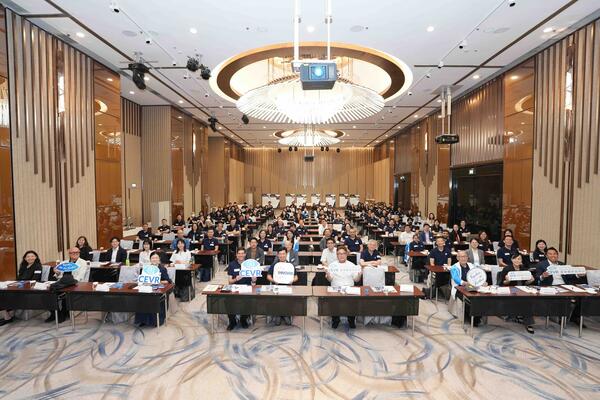
Researchers are using RNA in a new approach to fight HIV
You know mRNA, now meet siRNA

You know mRNA, now meet siRNA
By Media RelationsSociety learned about the value of mRNA during the COVID-19 pandemic when we saw scientists and medical professionals harness its power to deliver a vaccine for the virus within a year.
Now, University of Waterloo pharmacy associate professor Emmanuel Ho has developed a novel nanomedicine loaded with genetic material called small interfering RNAs (siRNA) to fight human immunodeficiency virus (HIV) using gene therapy. These siRNAs regulate which genes or proteins are turned on or off in our cells and showed a 73 per cent reduction in HIV replication.
“This opens the door for new therapeutics in the fight against HIV,” said Dr. Ho, who is among Waterloo’s researchers and entrepreneurs leading health innovation in Canada.
Autophagy, also known as the body’s recycling process, plays an important role in our body to eliminate microbes such as viruses and bacteria inside cells. HIV is quite smart and produces a protein, Nef, that prevents cells from activating autophagy.
This is the first research to develop a combination nanomedicine that can reactivate autophagy and prevent HIV entry into cells, allowing our body to re-initiate its defence system.
Additionally, HIV has a gene, CCR5, that allows the virus to enter a cell. The siRNAs target both Nef and CCR5 to reduce HIV infection.
This nanomedicine is intended to be applied vaginally to protect against sexual transmission of HIV. As a result, the nanomedicine is designed to be stable without leakage of siRNAs in the acidic vaginal environment but release the siRNA once inside cells.
“Viruses are smart. They produce Nef proteins to prevent autophagy from occurring,” Ho said. “Our process allows our body to fight the viral infection without needing additional drugs,”
Ho confirms that the next steps include further optimizing the process and improving our understanding of how autophagy plays a role in how our cells protect us from viruses.
“We also hope this will shed some light to develop more alternative approaches to effectively reduce antimicrobial resistance,” Ho said.
The study, pH-sensitive dual-preventive siRNA-based nanomicrobicide reactivates autophagy and inhibits HIV infection in vaginal CD4+ cells, was recently published in the Journal of Controlled Release.

Read more
Here are the people and events behind some of this year’s most compelling Waterloo stories

Read more
The InnoHK Centre for Eye and Vision Research aims to bring eye and vision research to market through Waterloo-Hong Kong partnership

Read more
15 University of Waterloo researchers have been named to the annual Highly Cited Researchers™ list for significant contributions to their specific fields of research
The University of Waterloo acknowledges that much of our work takes place on the traditional territory of the Neutral, Anishinaabeg, and Haudenosaunee peoples. Our main campus is situated on the Haldimand Tract, the land granted to the Six Nations that includes six miles on each side of the Grand River. Our active work toward reconciliation takes place across our campuses through research, learning, teaching, and community building, and is co-ordinated within the Office of Indigenous Relations.